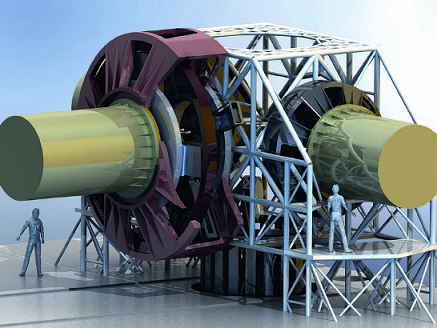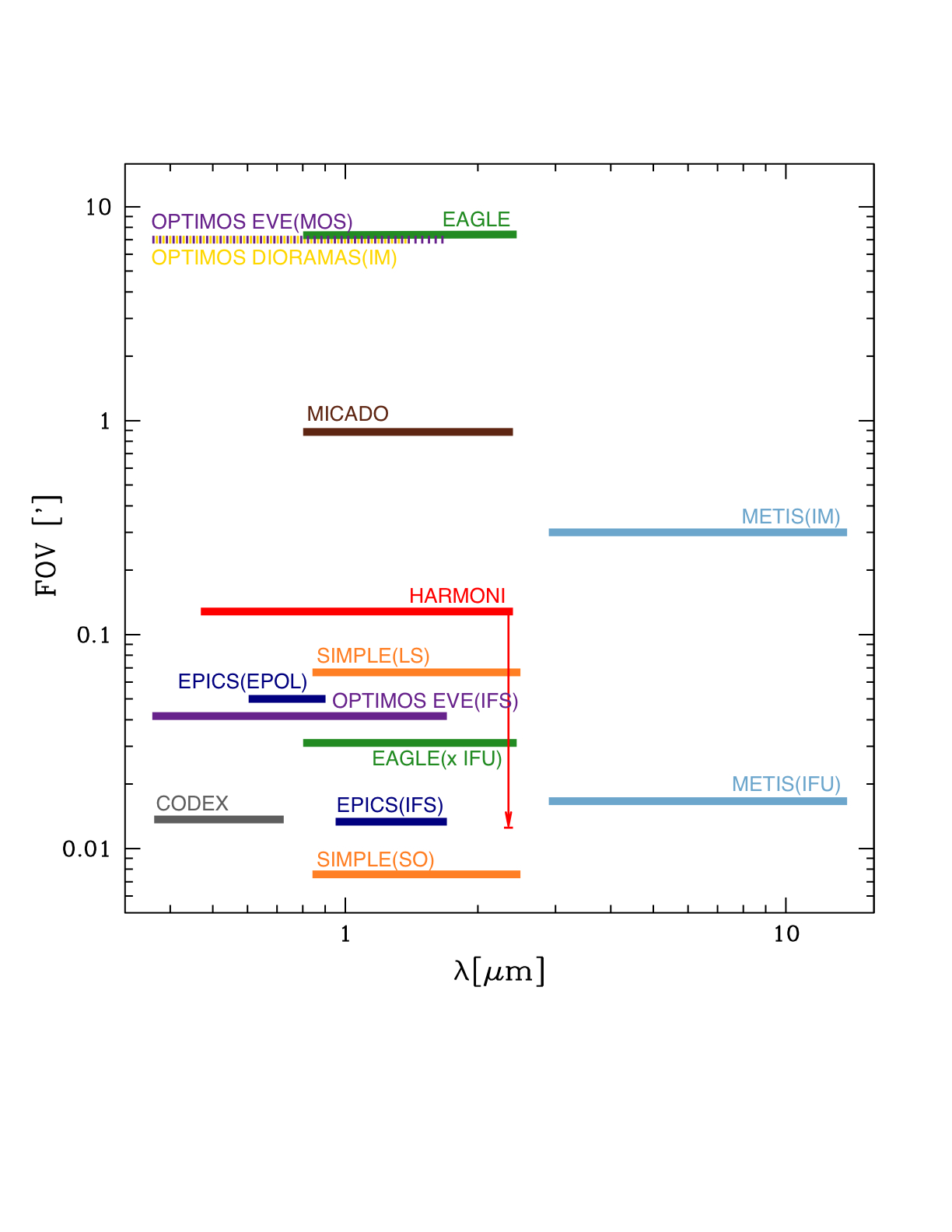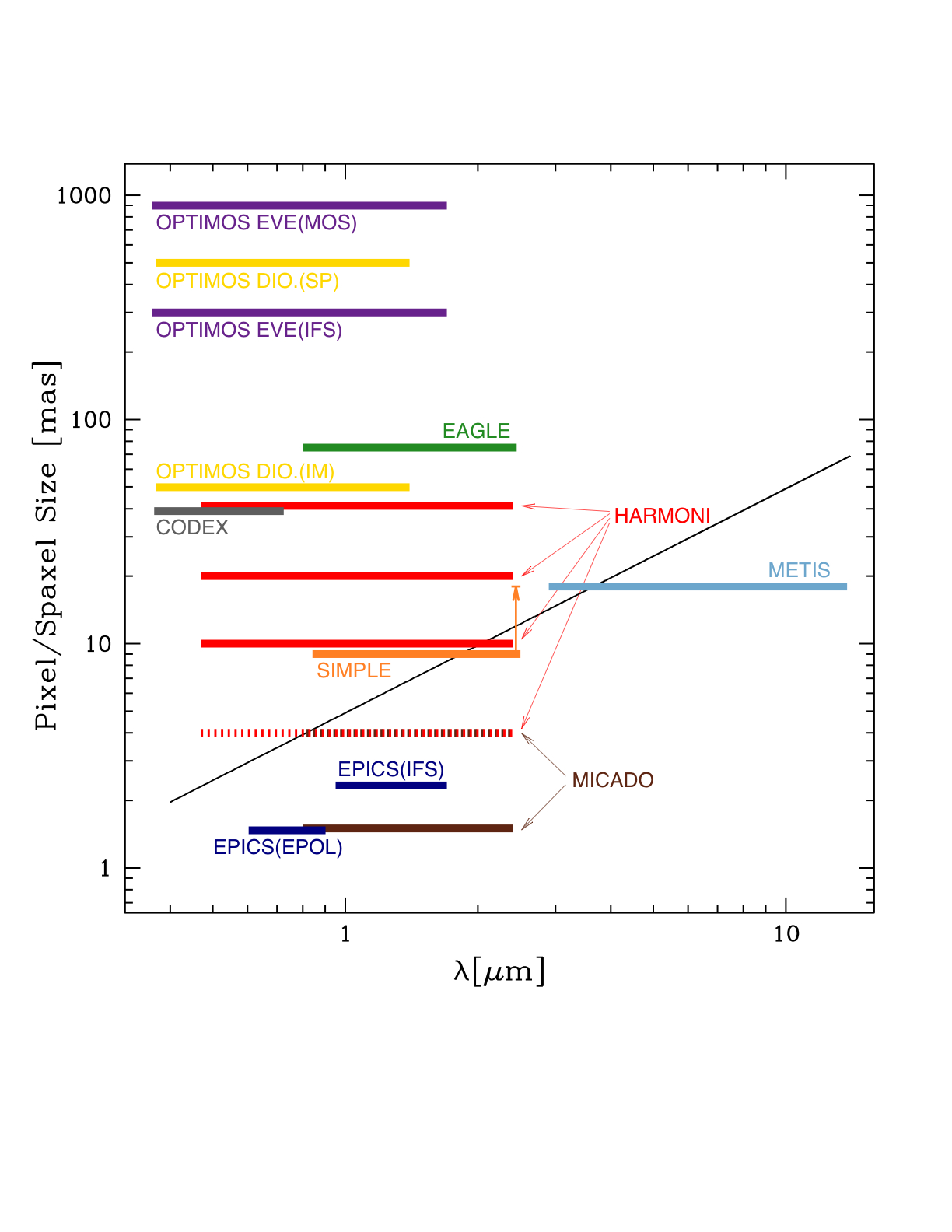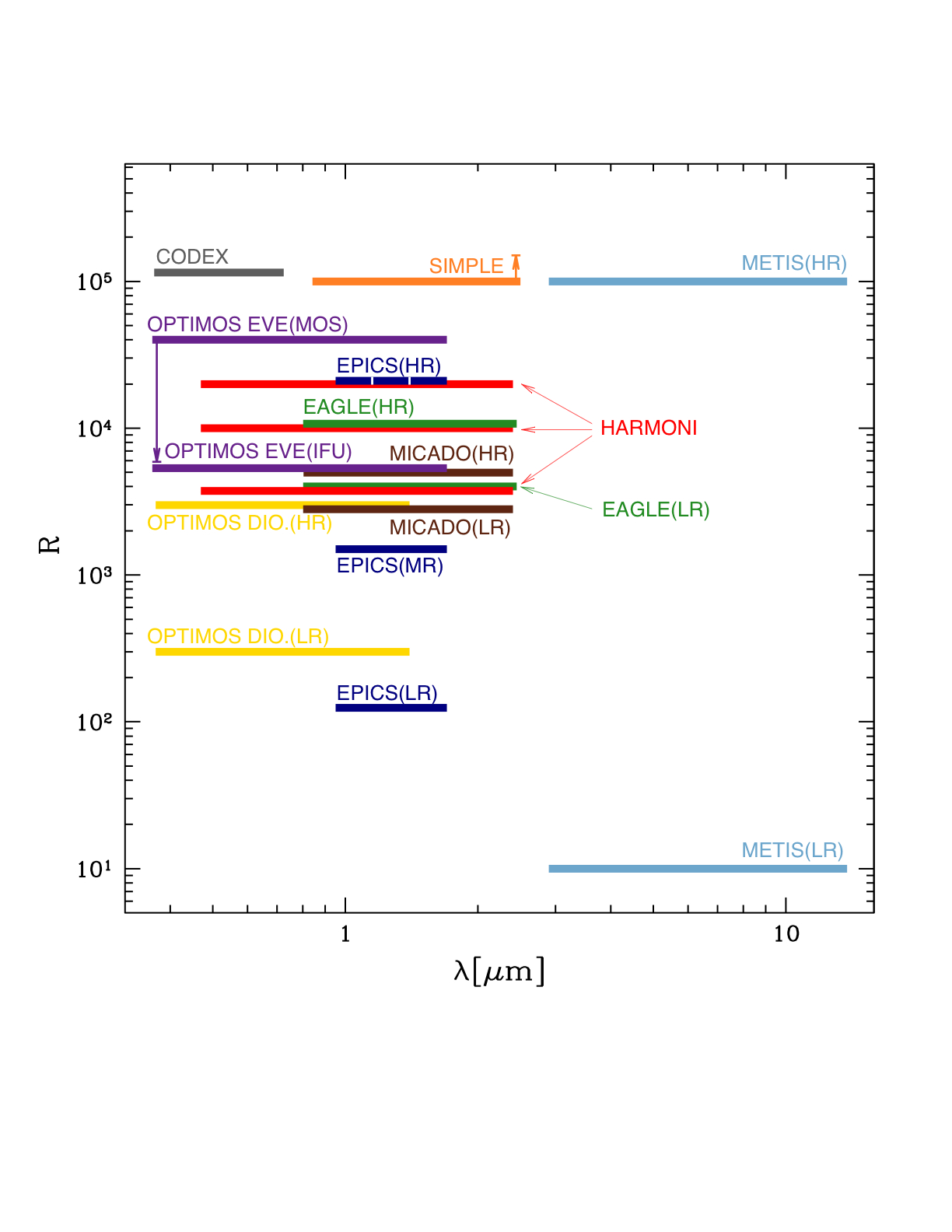E-ELT INSTRUMENTATION - Phase A

In June 2007 ESO presented a plan for instrument and post-focal
adaptive optics studies to ESO Council. This plan identified six
instrument concepts which were to be studied in collaboration with
institutes in the ESO community, as well as two post-focal AO modules
(MCAO and LTAO), and two other instruments to be chosen after an open
call to the community for additional concepts. By early 2010 all
studies (see table below) had successfully been completed. In two
cases the consortia were led by ESO, two were set up by direct
negotiation with external institutes and all others were selected
after an open call for proposals.
E-ELT Phase A Instrumentation Studies
| Name | Instrument Type | Principal Investigator Institutes | Wavelength Range Spectral Resolution Field-Of-View |
More Information |
| CODEX | High Resolution, High Stability Visual Spectrograph | Luca Pasquini, ESO ESO; Instituto Nazionale di Astrofisica (INAF), Osservatori Trieste and Brera; Instituto de Astrofisica de Canarias (IAC); Institute of Astronomy, University of Cambridge; Observatoire Astronomique de l'Universite de Geneve |
0.37 – 0.71μm R = 135000 0.82'' |
|
| EAGLE | AO-assisted Multi-integral Field NIR Spectrometer | Jean-Gabriel Cuby, Laboratoire d'Astrophysique de Marseille (LAM) Laboratoire d'Astrophysique de Marseille (LAM); Laboratoire d'Etudes des Galaxies, Etoiles, Physique et Instrumentation (GEPI); Office National d'Etudes et Recherches Aérospatiale (ONERA); United Kingdom Astronomy Technology Centre (UK ATC); Durham University |
0.8 – 2.45μm R = 4000 (HighR ~ 10 000) IFU: 1.65'' x 1.65'' |
|
| EPICS | Planet Imager, Spectrograph and Imaging Polarimeter with Extreme Adaptive Optics | Markus Kasper, ESO ESO; Laboratoire d'Astrophysique de l'Observatoire de Grenoble (LAOG); LESIA; Laboratoire d'Astrophysique de Marseille (LAM); University of Oxford; INAF, Osservatorio Padova; ETH Zurich; NOVA, Universities of Amsterdam and Utrecht; FIZEAU |
0.6 – 1.65μm R = 125, 3000 and 20000 IFU: 0.8'' x 0.8'', |
|
| HARMONI | Single Field Integral-field Spectrograph | Niranjan Thatte, University of Oxford University of Oxford; Centre de Recherche Astrophysique, Lyon; Departamento de Astrofisica Molecular e Infraroja, Consejo Superior de Investigaciones Cientificas, Madrid; Instituto de Astrofisica de Canarias (IAC); United Kingdom Astronomy Technology Centre (UK ATC) |
0.47 – 2.45μm R = 4000, 10 000 and 20 000 2:1 aspect ratio: |
|
| METIS | Mid-infrared Imager and Spectrograph with AO | Bernhard Brandl, NOVA, University of Leiden Max-Planck Institute for Astronomy (MPIA); Commissariat a l'Energie Atomique (CEA) Saclay; NOVA; Katholieke Universiteit Leuven; United Kingdom Astronomy Technology Centre (UK ATC) |
2.9 – 14μm Long slit (900 < R < 5000 at L,M,N); IFS (R ~ 100,000 at L,M) 17.6'' x 17.6'' (imager) |
|
| MICADO | Imager and Slit Spectrograph | Reinhard Genzel, Max-Planck Institute for Extraterrestrial Physics (MPE) Max-Planck Institute for Extraterrestrial Physics (MPE); Max-Planck Institute for Astronomy (MPIA); Universitaets-Sternwarte Munich (USM); INAF, Osservatorio Padova; Nederlandse Onderzoekschool Voor Astronomie (NOVA), Universities of Leiden and Groningen; LESIA |
0.8 – 2.5μm R < 3000 up to 53'' |
|
| OPTIMOS-DIORAMAS | Wide-Field Imager & Low-Medium Resolution Slit Spectrograph | Olivier Le Fevre, Laboratoire d'Astrophysique de Marseille (LAM) Laboratoire d'Astrophysique de Marseille (LAM); Observatoire de Geneve; INAF IASF Milano; University of Oxford; INAF OTs; Instituto de Astrofisica de Canarias (IAC); Observatoire de Haute Provence |
0.37 – 1.6μm R ~ 300, R ~ 1000, R ~ 2500 6.78' x 6.78' |
|
| OPTIMOS-EVE | Optical-NIR Fibre-based MOS | Francois Hammer, Laboratoire d'Etudes des Galaxies, Etoiles, Physique et Instrumentation (GEPI) GEPI, INAF, NOVA, NBI, RAL, AIP, LSW Heidelberg |
0.37 – 1.7μm R ~ 5000, R ~ 15 000, R ~ 30 000 Single object fibres: 0.81-0.9'' |
|
| SIMPLE | Cross-dispersed Echelle Spectrograph, Long-slit Option | Livia Origlia, INAF, Osservatorio Bologna INAF-Bologna, Firenze & Rome; Thuringer Landessternwarte; Pontificia Universidad Catolica de Chile; Uppsala |
0.8 – 2.5μm R = 130000 up to ~4'' patrol field for slit viewer |
Characteristics of the Instruments
Click on the images to display larger versions.
Width of the field of view vs. wavelength coverage for the eight E-ELT proposed instruments currently under study. When the expected field of view is not squared, the average value of both dimensions or the diameter is shown. In the case of OPTIMOS and EAGLE (up) the shown value refers to the patrol field. For SIMPLE, the plot shows the slit length in single-object and long-slit modes. |
Pixel/spaxel size vs. wavelength coverage for the eight E-ELT proposed instruments currently under study. The diagonal black line shows the diffraction limit of the telescope as a function of wavelength. The values shown here refer to the sampling size of the instruments in their different observing modes. In the case of OPTIMOS-EVE(MOS), the quoted value corresponds to the fibre aperture. CODEX is only included for illustrative purposes as this instrument will not record any spatial information. |
Spectral resolution vs. wavelength coverage for the eight E-ELT proposed instruments currently under study. High, medium and low resolution channels are included when available. The arrow in SIMPLE indicates the potential upper limit to be reached depending on specific construction details. In the case of OPTIMOS-EVE(MOS) the arrow represents the range of resolution expected to be available. |
Post-focal AO Modules
| Name | Instrument Type | Principal Investigator Institutes | Wavelength Range Field-Of-View |
More Information |
| ATLAS | Laser Tomography AO Module | Thierry Fusco, ONERA ONERA, GEPI, LESIA, UK-ATC, LAM, CRAL |
0.35 – 13.5μm 60'' |
|
| MAORY | Multi Conjugate AO Module | Emiliano Diolaiti, INAF, Osservatorio Bologna INAF, Osservatorio Astronomico di Bologna (INAF.OABo); Office National d.Etudes et de Recherches Aerospatiales (ONERA); INAF, Osservatorio Astronomico di Padova (INAF.OAPd); INAF, Osservatorio Astrofisico di Arcetri (INAF.OAA); INAF, Istituto di Astrofisica Spaziale e Fisica cosmica di Bologna (INAF.IASFBo) |
0.8 – 2.4μm 2' |
Links
- Contributions by ESO authors that were presented at the SPIE conference in Marseille, June 2008. Many of these papers describe the E-ELT and its instrumentation.



